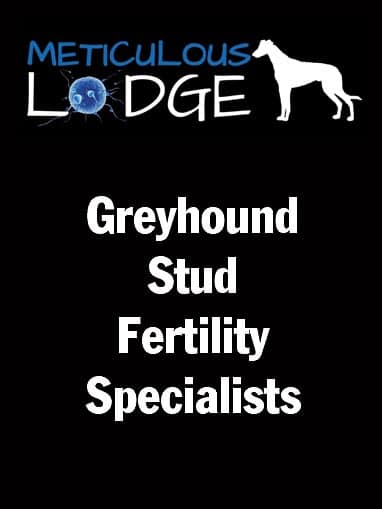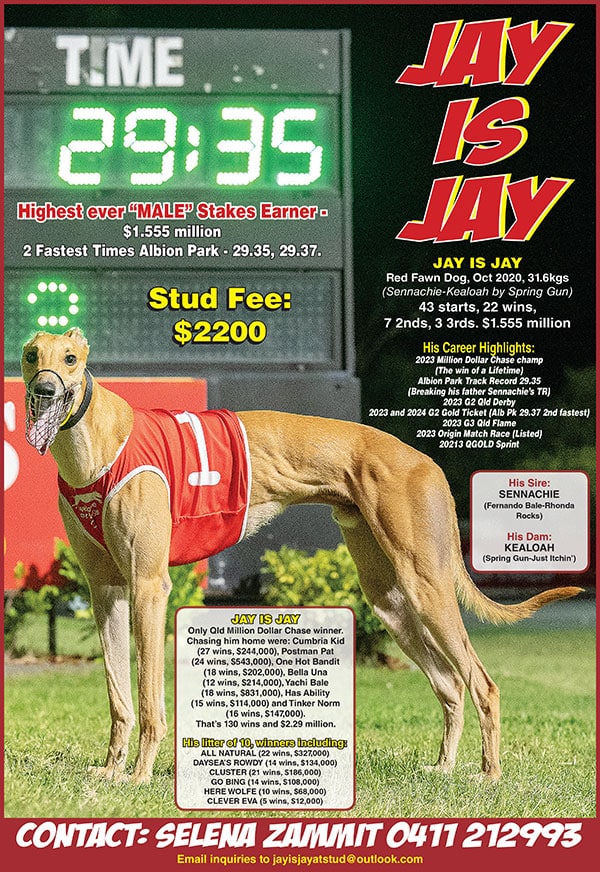
Caption: John Martin at his Ellangowan education centre in northern NSW
By DAVID BRASCH
JOHN Martin has been educating greyhounds since 1976, but admits it has been in the past 15 years that he has ‘got much better at it’.
That has come about, he says, by reading extensively in a bid to develop greater understanding of the dog, physically and mentally.
“Exercise physiology and animal behaviour is my area of interest,” says John who runs one of the country’s most successful greyhound education complexes at Ellangowan on the Northern Rivers of NSW.
John is booked out until September 2025 … proof he knows exactly what is required to have a greyhound educated properly for racing.
“I have gained so much of my understanding of physiology and behaviour by reading a number of excellent books,” said John.
These are:
The Care of the Racing Greyhound which John says is essential reading.
The Other End of the Leash by P McConnell
Dog Sense by John Bradshaw
Dog Training For Dummies, which John says has some “interesting concepts”.
Among other interesting books.
John moved to Ellangowan in 2005.
He believes the industry needs constant education themselves when it comes to educating greyhounds.
“I consider breaking in the equivalent of primary school,” he said.
“Some go on to high school (the racetrack) with no problem, others, those who were slow to catch on at breaking in, sometimes have the same trouble with this new situation.
“My advice is to go back to the start.”
With that thought, John is the first to help by setting out a plan to educate greyhounds, and re-educate them.
“Education is a four-week course, the dog has 12 to 14 runs on the track and that is just enough to teach it the basics,” he said.
“So, it is to your advantage to prepare the dog for this mentally and physically taxing time.
“The Care of the Racing Greyhound recommends a bath, a muscle check, a worm out as well as a vitamin and mineral supplement course before breaking in.
“To get the most out of this education period, your pup should be handled often, taken to the local track (or at least a bullring) and introduced to the mechanical lure at least once to gauge his readiness for education.”
Once the pup has arrived for his four-week course of education, John says the week-to-week routine will centre on:
Week 1: Watching other dogs from the viewing kennels, walk onto the lure while other dogs are grabbing it, slip onto the lure and a short distance drag around the track.
Week 2: More chasing/grabbing, then reverse into the starting box twice, then walk through an open box twice, then in the back door, holding the front door and encouraging the dog forward.
Week 3: More box practice then a 300m trial with another dog still holding the front of the boxes to encourage the dog forward and to settle.
Week 4: More box practice or lure work depending on individuals weaknesses, and then a going home trial.
John says education of greyhounds need some guidelines.
“Be patient,” he says. “Don’t slip dogs on day one. Work dogs together to encourage confidence and competition. Don’t skip and stop. Repetition is reinforcement.
“Praise good behaviour, ignore the bad behaviour. Never drag a dog towards the lure.
“Keep it short, especially early (first two weeks) and often.
“The biggest/keenest on the inside when slipping and in jumpouts. Don’t yell, handle calmly and quietly. Routine is important.
“The work is the reward. If the dog plays up in the boxes, back him out and take him back to his kennel, then try again tomorrow. The dog usually gets it the third time or the fourth.
“And don’t forget … time only matters when you are in jail.”









